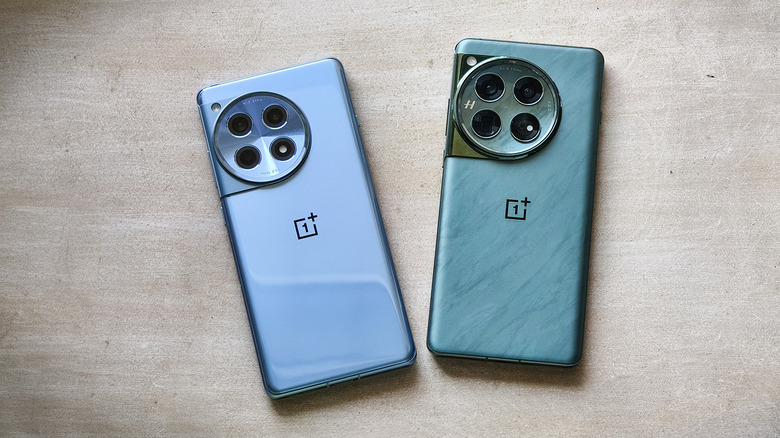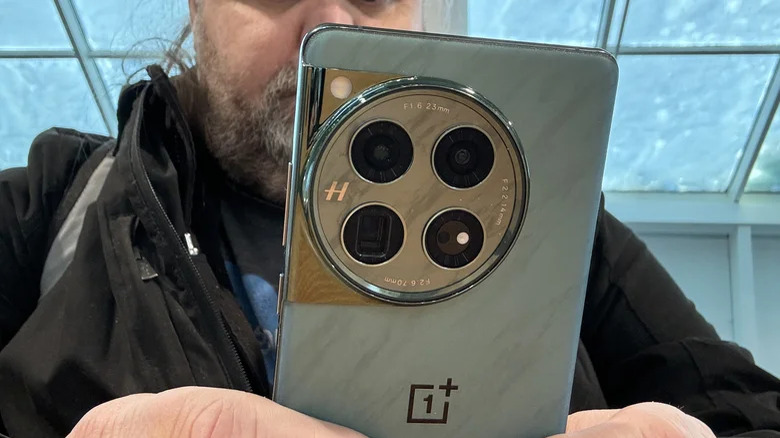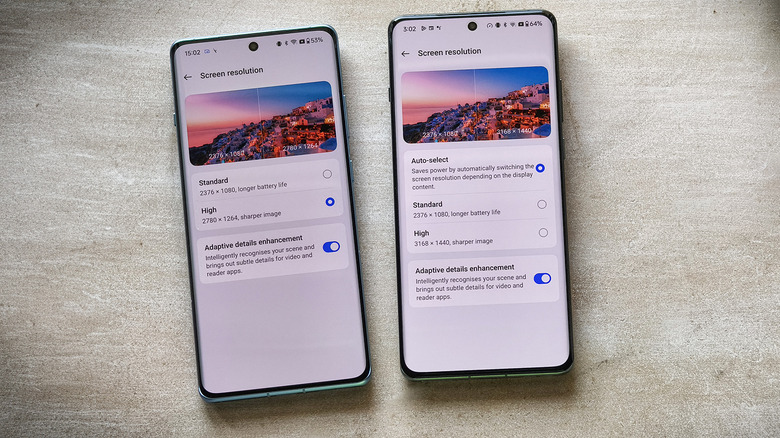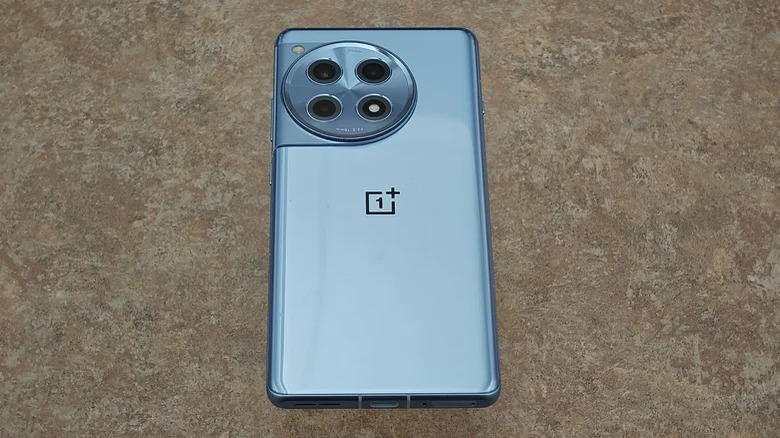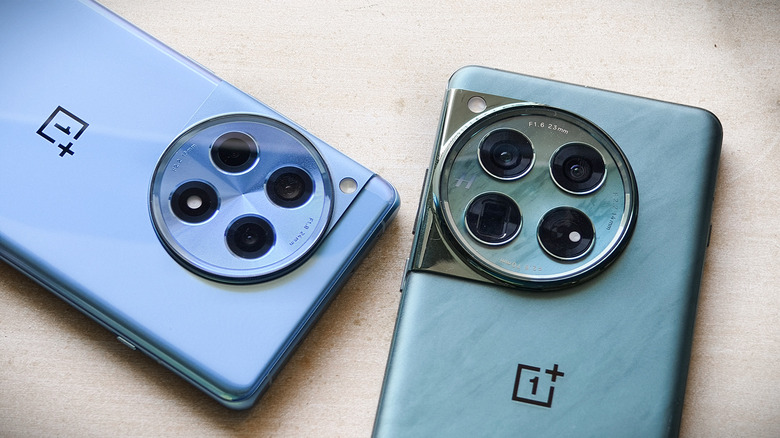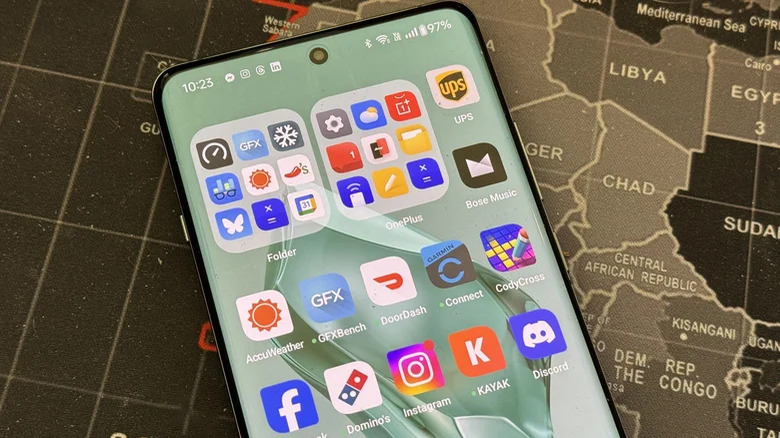OnePlus 12R Vs. OnePlus 12: Small Changes Go A Long Way
We may receive a commission on purchases made from links.
OnePlus' latest flagship, the OnePlus 12, was recently announced. For powerful internals, new cameras, and other upgrades it offers over the last year's OnePlus 11, it is fittingly priced at $799. But despite the top-notch experience it claims to offer, not everyone would be comfortable spending that amount on a phone. Therefore, for those who desire a flagship OnePlus experience without spending that much, the $499 OnePlus 12R makes for a good alternative.
OnePlus manages to price the 12R lower by choosing a last-gen processor, older cameras, and a slightly less vibrant display than the beastly 12. Many of these specifications are identical to last year's flagship — the OnePlus 11, compared to which the OnePlus 12R gets a brighter AMOLED and a bigger battery but lacks its versatile camera setup.
The OnePlus 12 and the 12R belong to different segments of Android smartphones, with some intersection in features. Besides their pricing, here are all the differences between the two phones.
Nearly identical outer form
The OnePlus 12 and the 12R are largely identical, with differences that can be overlooked from a distance. Both phones feature curved displays, curved glass backs, and circular rear camera modules in the same position.
The first visual sign setting the two phones apart is the "H" logo on the OnePlus 12's camera to signify tuning by Swedish camera manufacturer Hasselblad — which the 12R lacks. Side-by-side, the OnePlus 12's camera module appears noticeably larger than the 12R's, suggesting a more advanced camera setup.
While both phones have similar dimensions, the OnePlus 12 is noticeably heavier. It weighs 220g (7.76 oz) compared to the 12R's 207g (7.30 oz) body weight. The duo have identical placements of the power and volume buttons and the alert slider. Both also gain an additional infrared (IR) blaster and can be used as a remote control with TVs, ACs, and other electrical appliances.
Besides these, the two phones also have different colors and back finishes. While the OnePlus 12 comes in black, white, and a marble-finish green, the 12R is available in gray and a reflective blue. Notably, the OnePlus 12's back is protected under Gorilla Glass, while the 12R's is covered with regular glass.
Minor differences in displays
The next significant difference between the OnePlus 12 and the 12R is the display. While both use curved AMOLED panels, they vary starkly in terms of sharpness.
The OnePlus 12 features a 6.82-inch display with 1440 x 3168 pixels resolution. The OnePlus 12R, on the other hand, has a marginally smaller 6.78-inch display with a lower resolution of 1264 x 2780 pixels. Despite the differences, both phones can be set to a lower 1080p resolution to save battery without significantly reducing the display's sharpness or visibility.
Despite its lower resolution, the OnePlus 12R doesn't compromise on brightness. Both the OnePlus 12 and the 12R have a claimed value of 1,600 nits in HBM or the High Brightness Mode (when adjusted manually or while under sunlight) and 4,500 nits of peak brightness (measured per pixel while watching HDR content). Both also support popular HDR standards, including HDR10+ and Dolby Vision, for better contrast.
Both displays get the new Gorilla Glass Victus 2 protection, a step up from the OnePlus 11.
Identical power and charging options
The OnePlus 12R is powered by the last-gen Snapdragon 8 Gen 2 chipset, while the OnePlus 12 gets the latest Snapdragon 8 Gen 3. Besides apparent benefits to performance, the 8 Gen 3 is also equipped with a 98% faster neural processor to accelerate on-device AI applications such as running chatbots or text-to-image processors.
The OnePlus 12 comes with at least 12GB of RAM with 256GB storage and goes up to 16GB of RAM and 512GB of storage. Meanwhile, the 12R gets either 8GB of RAM paired with 128GB storage or a 16GB variant with 256GB. Notably, the 128GB variant uses a slower UFS 3.1 storage technology, while the 256GB has a newer and faster UFS 4.0.
The OnePlus 12 gets a 5,400mAh battery, while the 12R has a slightly bigger 5,500mAh pack. Both phones support proprietary 80-watt fast wired charging in the U.S. and you get the fast charger in the box. You can also use third-party chargers, but that slows down the charging speed considerably.
The OnePlus 12 also supports fast wired charging up to 50W using a proprietary wireless charger — although you can also use a standard Qi-compliant wireless charger for slower charging. The OnePlus 12R does not have wireless charging at all.
Cameras make all the difference
Another significant difference between the OnePlus 12 and the 12R is in terms of the cameras. Although both come with a primary 50MP camera, the underlying sensors differ significantly. The OnePlus 12 uses a new Sony LYT-808 sensor which captures more light and details than the 12R's IMX890.
Hasselblad's color tuning also results in more natural color tones and preset filters on the OnePlus 12's camera, which the 12R lacks.
For their secondary cameras, both phones get ultrawide sensors with differences. The OnePlus 12 gets a 48MP ultrawide camera with autofocus, which allows it to be also used for macro photography. Meanwhile, the OnePlus 12R gets a fixed-focus 12MP ultrawide camera. The sensor on the OnePlus 12 is also physically larger than the 12R, resulting in brighter and sharper images.
For its third camera, the OnePlus 12 gets a 64MP telephoto camera with 3x optical zoom, ideal for better natural bokeh in portrait shots. The OnePlus 12R, on the other hand, gets an extraneous 2MP macro camera with a fixed focus that can only take images at a distance of roughly 4cm (~1.6 inches).
The OnePlus 12 gets a 32MP camera for selfies, while the 12R gets a 16MP unit. Both of these offer only fixed focus.
In terms of video, both phones can record 4K videos at 60fps using their primary cameras. The OnePlus 12 also supports 8K video recording at 24fps and can record videos with HDR, while the 12R doesn't.
Software support and value for money
Both the OnePlus 12 and the 12R run OxygenOS, the software is essentially replicated from Oppo's ColorOS. Despite the varying hardware, both phones offer the same software experience and are promised the same level of software support from the company.
For both the OnePlus 12 and the 12R, the company promises four years of Android updates and five years of security updates. The duo runs Android 14 out of the box and will be updated to Android 18, although the OnePlus 12 may get quicker and more frequent updates due to its higher standing in the portfolio.
Coming to the pricing of the two phones, the OnePlus 12 is available at a starting price of $799.99 for the 12GB/256GB variant. If you pre-order before February 18, you can get the 16GB/512GB variant for the same price. But later, it will be available for $899.99. The phone is set to start shipping on February 26 if you buy it on OnePlus' online store or February 21 if you buy it on Amazon.
Meanwhile, the OnePlus 12R's 128GB and 256GB variants are available for pre-orders at $499.99 and $599.99, respectively, and start shipping around February 16.
For $300 less, you still get dependable flagship-level performance and brilliant value for money when buying the OnePlus 12R. The OnePlus 12 primarily leads with advantages in AI applications and better cameras.
